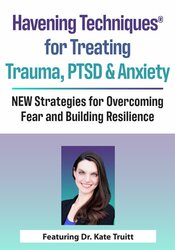Havening for Kids: 2 Powerful Stress-Busting Tools

Just like adults, kids need stress relief tools to help them stay calm, alert, and regulated.
When our minds and bodies are working together appropriately, we are in “the Green Zone.” But stress, particularly prolonged stress, pushes us out of the Green Zone and into the Red Zone (hyperarousal) or the Blue Zone (hypoarousal).
It’s important to remember that the impact of stress on a kid’s nervous system may look different than we expect.
This zone is characterized by action-oriented behaviors (flight, fight, or people-pleasing).
What it can look like in kids: anger, panic, working extra hard to perform or please, aggression, crying, screaming, defensiveness, reactivity, impulsivity, hostility, irrationality, self-centeredness, poor focus, inattention, sleep disturbances, bossiness, tantrums, name-calling, hitting, fidgeting, hyperactivity, and irritability.
This zone is characterized by passivity-oriented behaviors (freeze).
What it can look like in kids: freezing, zoning out, anhedonia (lack of pleasure), distractedness, sadness, withdrawal, reluctance to explore, emotional numbing, isolation, sulking, crying, fatigue, and apathy.
Here are 2 quick and effective tools to help kids relieve stress and get back to their Green Zone.
Kids can also use palm havening by moving their hands as though they’re washing them under warm water, rubbing their palms together slowly.
Pair these motions with one of these suggested brain games to soothe both the mind and the body.
When our minds and bodies are working together appropriately, we are in “the Green Zone.” But stress, particularly prolonged stress, pushes us out of the Green Zone and into the Red Zone (hyperarousal) or the Blue Zone (hypoarousal).
It’s important to remember that the impact of stress on a kid’s nervous system may look different than we expect.
Red Zone
A nervous system in the Red Zone is like a car with the gas pedal stuck down.This zone is characterized by action-oriented behaviors (flight, fight, or people-pleasing).
What it can look like in kids: anger, panic, working extra hard to perform or please, aggression, crying, screaming, defensiveness, reactivity, impulsivity, hostility, irrationality, self-centeredness, poor focus, inattention, sleep disturbances, bossiness, tantrums, name-calling, hitting, fidgeting, hyperactivity, and irritability.
Blue Zone
A nervous system in the blue zone is like a car with the brake pedal stuck down.This zone is characterized by passivity-oriented behaviors (freeze).
What it can look like in kids: freezing, zoning out, anhedonia (lack of pleasure), distractedness, sadness, withdrawal, reluctance to explore, emotional numbing, isolation, sulking, crying, fatigue, and apathy.
Here are 2 quick and effective tools to help kids relieve stress and get back to their Green Zone.
Tool 1: Breathing
We all breathe, and yet very few of us are taught how to use our breath. For kids, teaching simple breathing techniques can dramatically increase their emotions regulation while building self-empowerment. It’s also a tool they can use anytime, anywhere!Practice: Hand Breathing
- Hold your hand in front you.
- Starting with at the base of your thumb, use the pointer finger of your other hand to slowly trace up to the tip of your thumb, breathing in slowly as you do.
- Pause and hold your breath lightly as you trace over the top of your thumb.
- Slowly breathe out as you trace back down the other side of your thumb and toward your pointer finger.
- Repeat the process for all your fingers, tracing the full hand. Doing so will give you 5 full, slow, deep breaths.
Tool 2: CPR For the Amygdala
For kiddos who need a little extra interaction and stimulation to stay engaged, CPR for the Amygdala is ideal. The havening touch rapidly calms the body, while the brain games keep them engaged and focuses the mind!Practice: The Havening Hug & Brain Games
Show kids how to do the self-havening touch by crossing your arms across your chest and resting your fingertips on the top of your shoulders, then moving your hands down your arms to your elbows.Kids can also use palm havening by moving their hands as though they’re washing them under warm water, rubbing their palms together slowly.
Pair these motions with one of these suggested brain games to soothe both the mind and the body.
- Sing a song together
- Find 5 square, 5 round, 5 soft, and 5 smooth things in your environment
- Find 2 things in your environment for each color of the rainbow
- Breathe in through the nose like you’re smelling a flower, then out slowly like you’re blowing out a candle 5 times
Dr. Kate Truitt provides easy ways to incorporate stress relief into your child's daily routine in this quick video:
Want to learn more about using Havening Techniques® with children and teens? Check out Dr. Kate Truitt's YouTube playlist for helpful strategies, exercises, and clinical insight.

Havening Techniques® for Treating Trauma, PTSD and Anxiety
What do you do when a patient is hijacked by their emotional brain?






